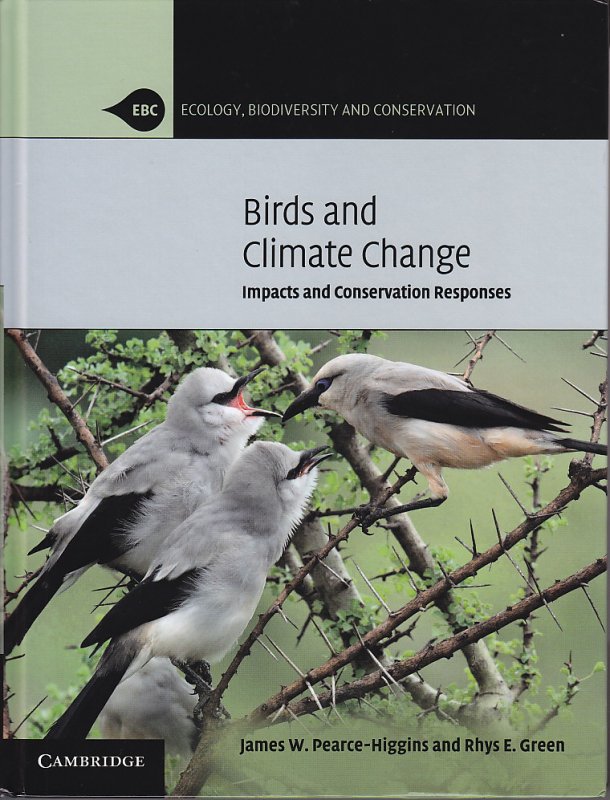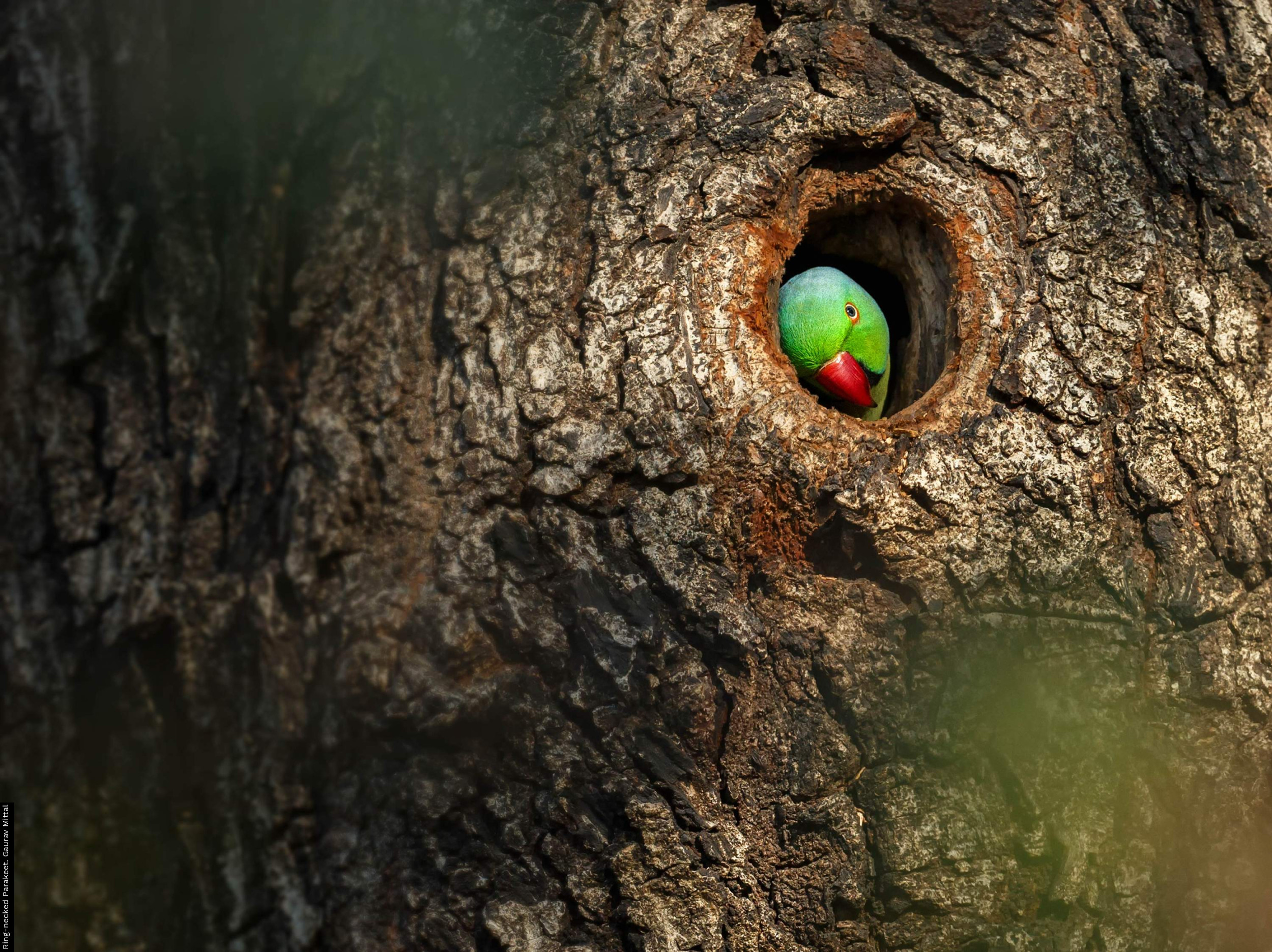
Publisher: Cambridge University Press, Cambridge
Publication Year: 2014
Binding: Hardback
Page Count: 475
ISBN Number: 978-0-52111-428-8
Price: £ 75.00
Birds and Climate Change: Impacts and Conservation Responses
Pearce-Higgins & Green have produced one of the best written text books that I have ever encountered.
The clear, fluent text is readily accessible to an interested and enquiring lay audience, whilst at the same time providing a state of the art assessment of climate change impacts upon birds which will be essential for the scientific community. Throughout, the book in general comprehensively surveys the literature, assessing the evidence for and against various hypotheses, and complementing this with analyses of the literature recently carried out by the authors themselves. Each chapter ends with a series of clear summary points. The book is very well illustrated with informative figures and photographs, some of which would have benefited from colour reproduction, but this would likely have increased the cost of a copy to an undesirable level.
The book begins with an overview of the evidence that climate change is in fact occurring, the basic physics behind climate change, and the evidence showing that man’s activities are very likely to have been the dominant cause of this warming. At the time of writing this book, the Intergovernmental Panel on Climate Change (IPCC, 2007) had concluded that this was ‘very likely’, as I write this review, IPCC (2014) has now concluded that it is ‘extremely likely’. A particular merit of the chapter is that it leads the reader through some of the common issues that members of the public often ask when questioning the evidence for climate change, explaining for example the need to consider the process on long time scales on a global scale.
Next, the authors take the reader on a fascinating in depth ‘tour’ of the effects that climate change has so far been observed to have on the timing of bird migration and breeding (known as ‘phenology’), bird populations, and bird distributions on both land and sea and on all continents. In particular there is a most interesting account of how advancement in arrival dates of migrant species are linked to observed changes in temperature along their migration routes, culminating in discussion of the latitude dependence of these advancements. The effects of such changes in phenology are then considered, explaining the potential for ‘phenological mismatch’, for example, a mismatch between the timing of passerine breeding and the peak abundance of caterpillars needed for successful fledging. It also considers how phenological change generally lags behind the current rate of climate change, especially for long distance migrants. The authors propose an interesting hypothesis that deteriorating conditions on the wintering grounds might be contributing to this lag. The authors next review impacts of climate change on birds in different habitats around the world, noting the general dearth of studies in the tropics where species richness is highest. In particular they highlight the detrimental effects that climate change has already had upon many different seabird populations in different parts of the world, from the UK to the Antarctic. There is excellent coverage of the climate change response of complex ecological relationships and population dynamics affecting migrants and shorebirds in arctic and temperate ecosystems.
The question of what all this means for the future is then addressed, by showing how computer modelling can be used to project changes in bird distributions, range sizes and populations as a result of climate change. To date, global temperature has only increased by 0.9C since 1850, whereas the IPCC (2014) projects that global temperature could rise by as much as 6C by the end of the century. The sobering projections of how rising global temperatures induce increasingly large projections of range loss, population declines and extinction risks leads to the second half of the book, where the authors consider several methods by which conservationists can incorporate climate change into their conservation toolkit, in order to help birds adapt to the projected climate change. For small climate changes of up to 2C, corresponding to the level of aspiration that the Un Framework Convention on Climate Change has set for limiting global warming, there are often many options for habitat management and reduction of concomitant pressures, whilst for larger changes, more radical changes such as management of the wider landscape, and finally the very expensive option of assisted colonization, become increasingly important.
Finally, the authors consider the ways in which humans are attempting to reduce the greenhouse gas emissions that cause climate change, through a process called ‘mitigation’, and how these different mitigation methods are expected to impact upon birds. Large scale production of biofuels is shown to have extremely damaging impacts upon avian conservation, whilst solar power is expected to be largely benign. Windfarms need to be appropriately sited to reduce impacts upon bird populations. Some methods, such as peatland restoration, are highlighted as being beneficial for both mitigation AND bird conservation.
A very nice touch is the well-considered thought experiment based on evidence collected in books about likely effects of different combinations of climate change and climate change mitigation methods upon the future of the Red Grouse in the UK.
The final chapter synthesizes the information collected throughout the book, concluding that the future of many bird species will depend on our ability to limit the severity of future climate change impacts upon them. It is clear that both adaptation, and mitigation, will be required. Of key importance will be the degree to which we mitigate, and the way in which we choose to mitigate.
The book provides an invaluable resource for both scientific and lay audiences on the observed and projected impacts of climate change on our avifauna, and how these impacts can be reduced by appropriate adaptation and mitigation. This excellent book is highly recommended.
Book reviewed by Rachel Warren
buy this book





Share this page